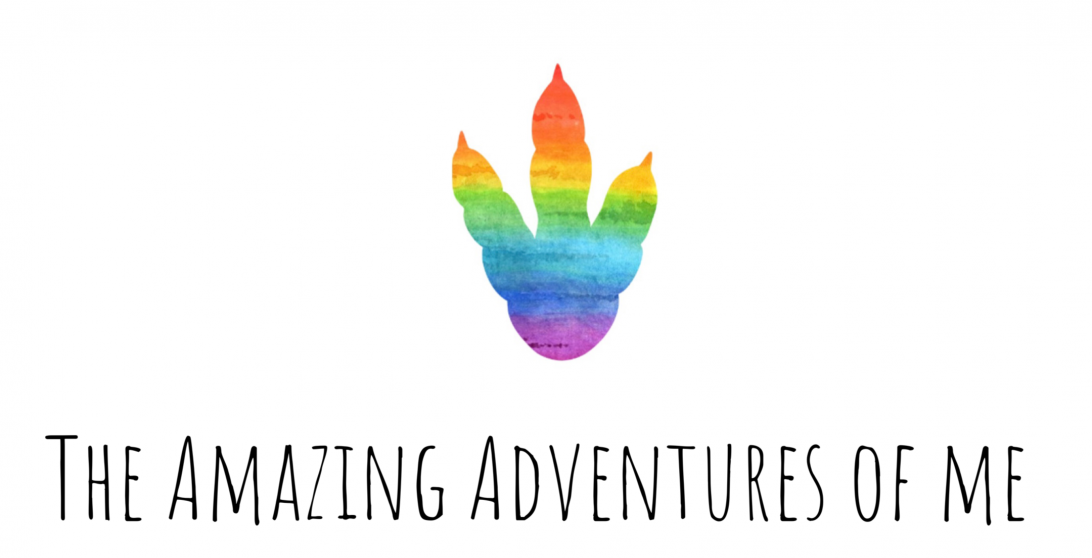Last Updated on Friday, May 2, 2025 by Lavania Oluban
This is a sponsored blog post
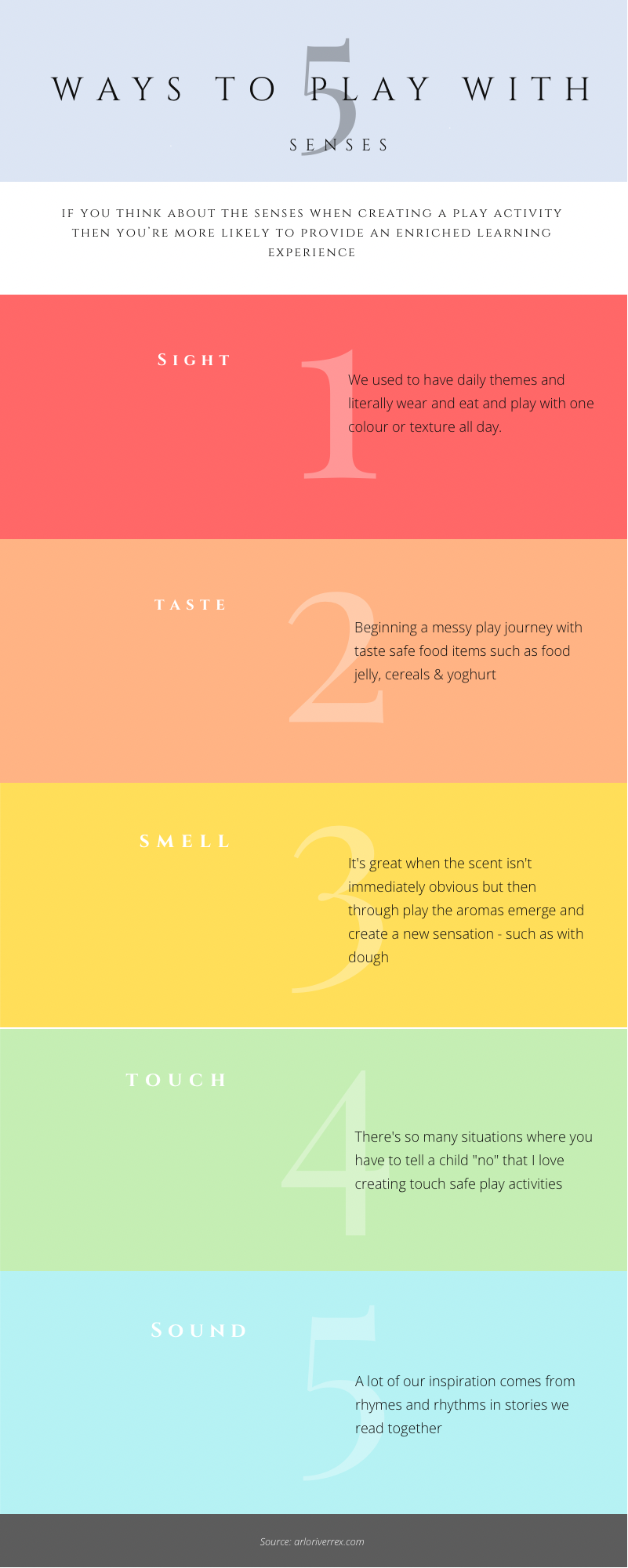
I am extremely passionate about learning through play. I share all sorts of activities we do at home and most of the time it looks like complete chaos, but there’s method behind the madness. I try to incorporate opportunities to learn in to everything we do, in such a subtle way that Arlo doesn’t realise he’s learning new life lessons.
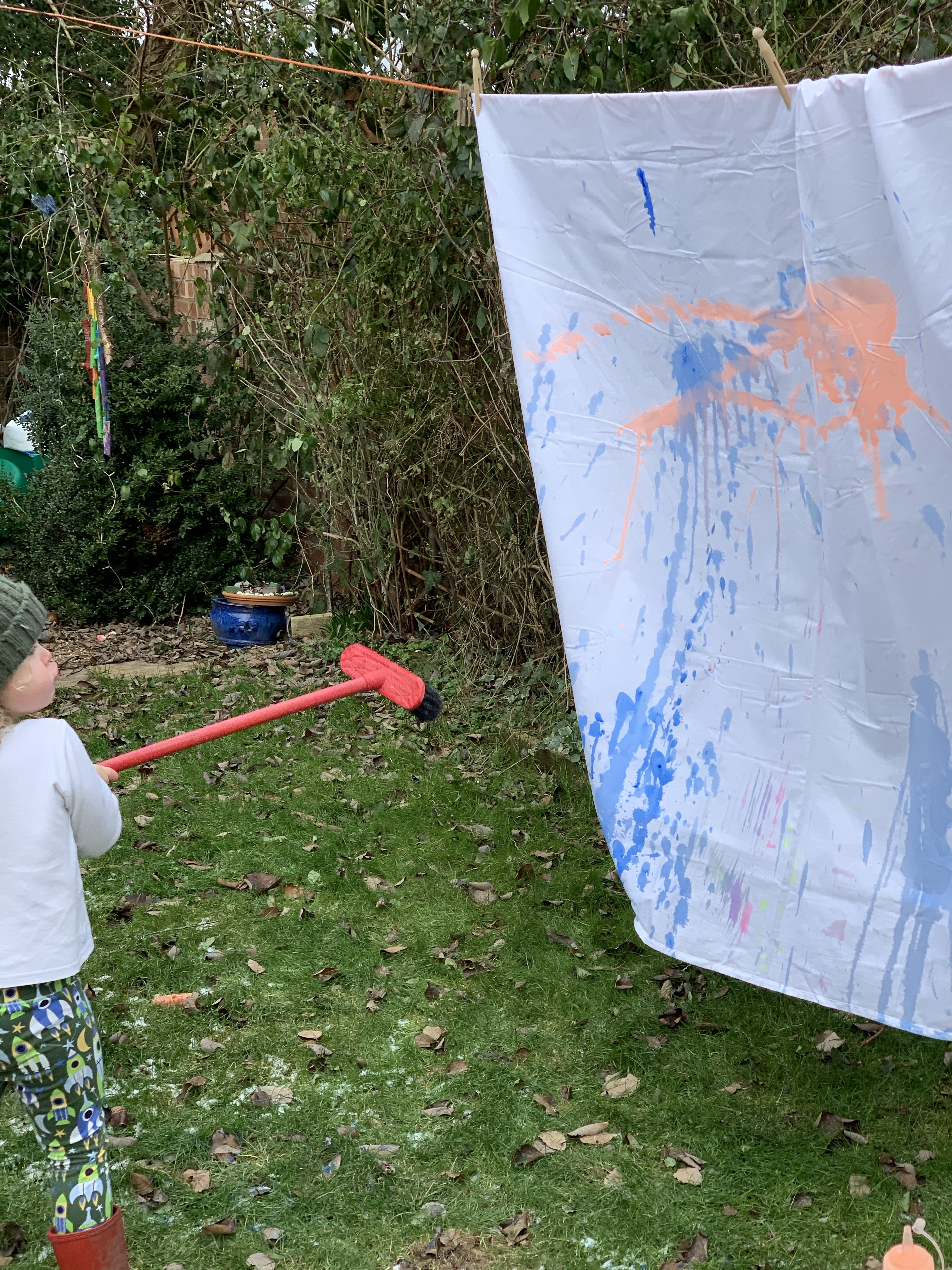
I often get asked about how I manage to engage him for long periods of time with one activity but the truth is that he has a maximum ten minute attention span, and so my trick is to not throw everything in all at once. I try to build up an activity I’m creating. I use aspects of play from the senses to guide me in setting up something which will last for longer than it takes to clean up.

I often share colourful pictures and craft projects we have completed together and one common theme is colour. So we’ve usually got the visual aspect of “invitations to play” covered. I save all sorts of bits and bobs and try to stick to seasonal and festival themes through the year and having a craft stash is the first step to creating engaging play set ups. Never throw anything away – plastic toys seem to have a bit of a bad reputation in the play communities but we look after ours and constantly wash and re-use them. I also provide “real” tools for Arlo to use in play – usually kitchen utensils.
1. Sight
Babies see in black and white – did you know that it’s not until about five months when babies can see the full colour spectrum? Somewhere around 4-6 months old babies begin to develop hand – eye co-ordination. The first time a baby reaches out to touch something they can see is a huge milestone and a precursor to weaning.

Toys such as stacking blocks, cups and rings are fabulous to play with at this stage and I purchased bright sets with rainbow colours and we still use these now. We used to have daily themes and literally wear and eat and play with one colour or texture all day. I use food colouring and paint to brighten everything up however It’s not just about being colourful. Sometimes you can go for a shiny or a natural theme which is just as inviting.

By combining efforts to incorporate the other senses in to play I add new experiences and an additional dimension to play. A tuff tray covered in brown paper to apply paint to a huge canvas was fun – the plan was to learn about how to make secondary colours from primary colours with this one. Adding in pine cones and bamboo sticks as well as paint brushes gave Arlo the chance to experiment with mark making and paint mixing in new ways. Appealing to his touch sense as well as just being visual.

Our drinks mixing station activity began life like this. As we have been doing lots of mixing activities recently Arlo enjoyed approaching the bottles of colourful water and trying to make the yellow turn green by adding blue. He didn’t know at first glance that I’d also been considering the other senses and that his drinks were “real” and this led us on to a careful drinks sampling exploration.
2. Taste
Arlo is almost four and so we play with all sorts now that he has gone past the “putting everything in to his mouth” stage. This is entirely normal for babies and so all of the different activities we share will need to be adapted for younger ones to avoid any choking risks with younger ones and I always supervise play and keep a count of small objects too.

When Arlo was little “food safe” resources were often used. Adding jelly to his high chair tray as a play resource just before we began weaning was a great way for him to be introduced to food items and his high chair. I’d give him a spoon to hold too. Cereals and spaghetti were fun to use and adding food colouring to yoghurt to use as paint worked wonders for us.

Something as simple as providing the fruit garnishes in our potion station was a great way to discuss the differences between sweet and sour. Comparing oranges and berries to lemons and limes was a great discussion point but it began with the colour differentiation and the sight before we eventually used touch to explore too.

3. Scent
The way things smell is very closely linked to taste – it was when Arlo noticed that the coloured drinks in the potions had a smell and were slightly sticky. With encouragement from me that these were real and okay to drink he figured out each colour was a different drinks flavour. He went around each cup sniffing and trying to guess which flavour was which – I’d used food colouring to try and disguise the flavours – so the orange flavour drink was blue. He found this hilarious because it was a trick and a totally new experience.

We have been experimenting with scent from the early stages too. Letting him wave around a bunch of fresh lavender or mint as a six month old in the high chair was fun enough for him. More recently I’ve adding essential oils and fragrances to play dough. When I made a cinnamon dough he said it “smells like Christmas” and he compares the smell of mint to toothpaste. It’s great when the scent isn’t immediately obvious but then through play the aromas emerge and create a new sensation.
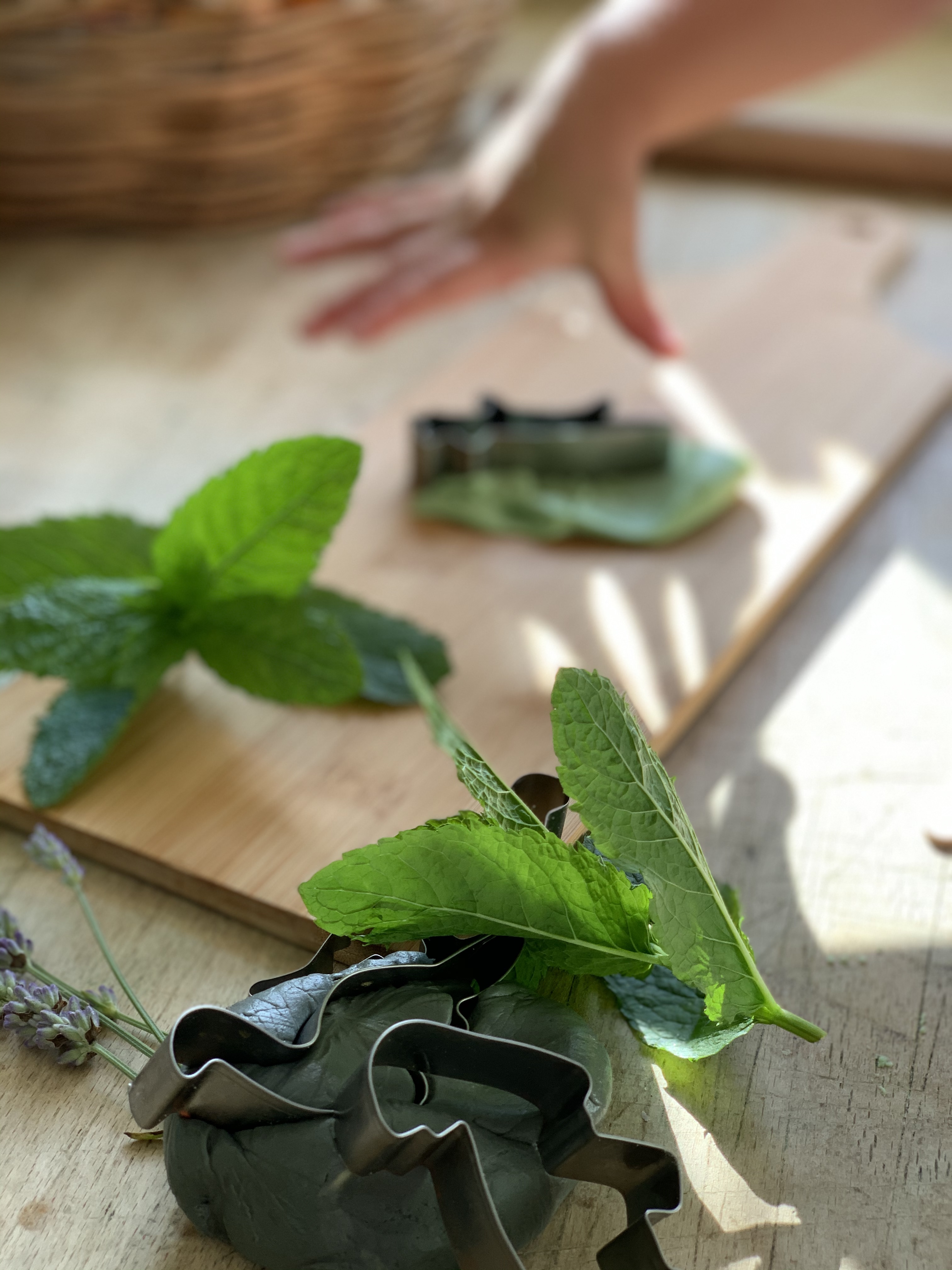
I often find adding a new layer or dimension to a Play activity based on the senses helps to prolong the interaction. I often get asked how I manage to keep Arlo interested for longer than five minutes and this is how. As soon as he mentioned the minty toothpaste smell he linked teeth to dinosaurs and so out came some Dino cookie cutters to use and this added an extra ten mins or so to the activity.
4. Touch
I love creating play activities which are touch safe. There’s so many situations where you have to tell a child “no” that it’s hard to help them build up enough confidence to explore and problem solve. Of course we need boundaries and have to know not to touch hot water or ovens or to leave a tap running but sometimes children need to know why rules are in place and also have a change to use their problem solving skills to try and create solutions.
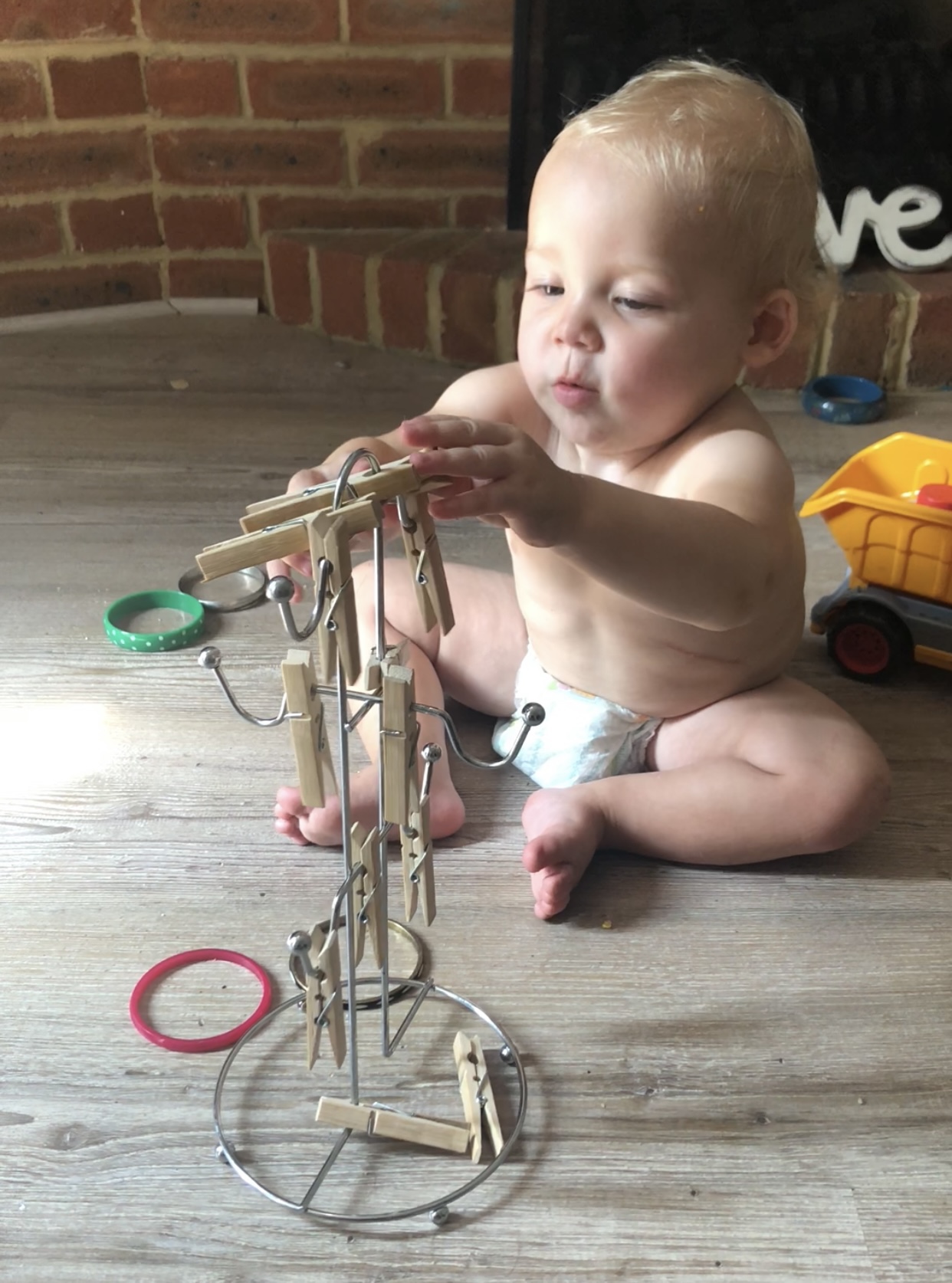
Lots of household objects are often “off limits” but if you create a safe environment to explore and supervise play then anything is possible with items you already have around the house. Arlo was obsessed with clothes pegs and so one afternoon I gave him a bunch attached to a mug tree and it was his job to try and pinch them off – really challenging those fine motor skills and then trying to also peg them back on. He also liked the sounds of my bracelets as they clinked on the metal and so we added in a ring toss type game with the mug tree too.
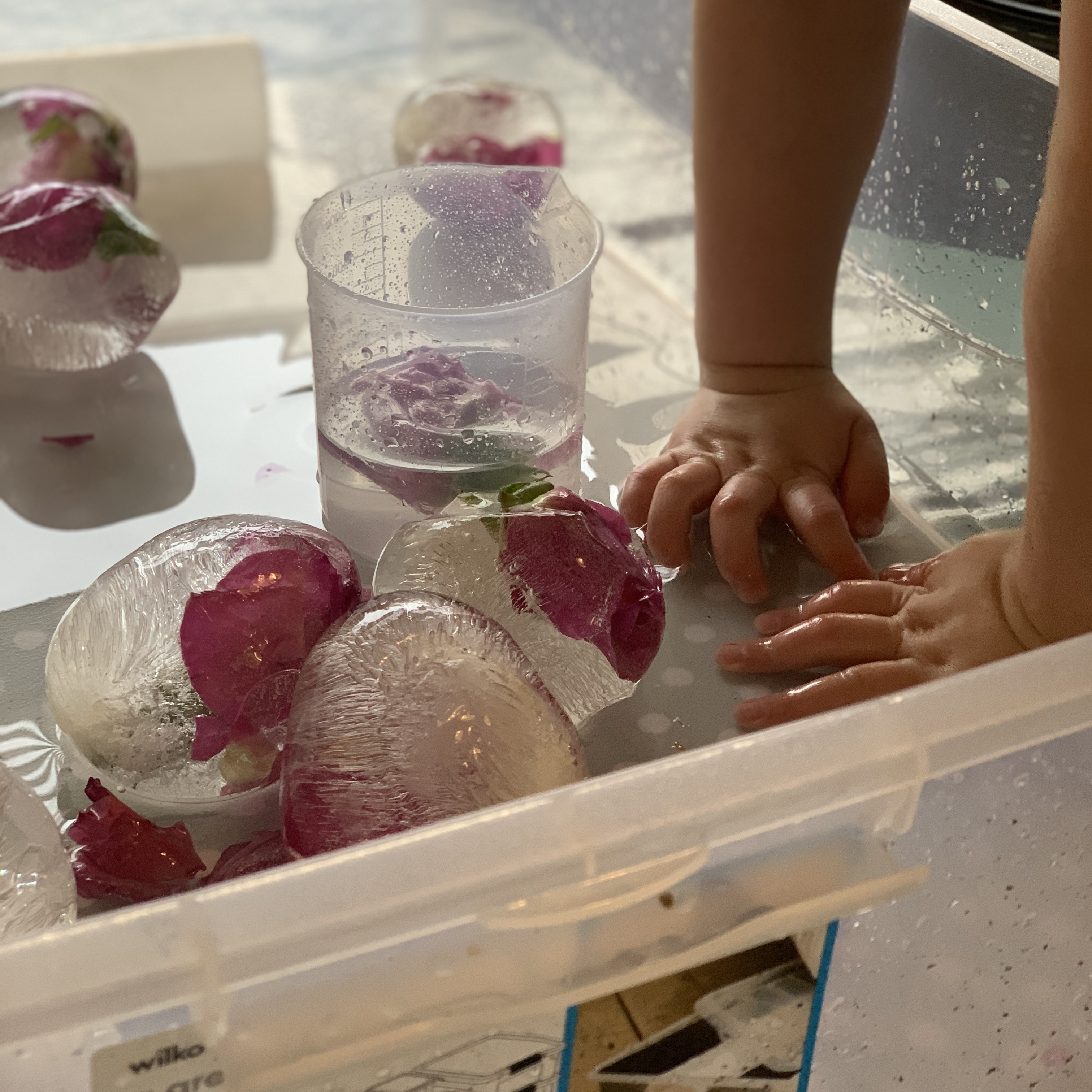
I use tuff trays, the mud kitchen outdoors, trays for dough and big tubs when we are using really slimey stuff indoors now. Learning things like the difference between hot and cold is a great life lesson and so we often use ice and warm water to melt things and demonstrate the difference and meaning of the two words.
Placing smaller bowls and cups inside a bigger environment works well for us. Arlo knows he can pour and mix and do all sorts within the boundaries of the tray. A great place to begin exploring paints and messy play is the bath tub for a quick clean up if you aren’t quite ready for the chaos of a tuff tray – then you can literally shower everything away and wash off in the same place.

Being able to touch things is a great way to help babies to explore food when weaning – smushing up fruits and covering faces with porridge is great fun and also a way to acquaint ourselves with new textures. Touch is also important as a pre-Curser to writing – learning to grasp tools and exercise all the muscles in their hands is great preparation for holding a pencil and so play for us is always very hands on. I always provide “tools” to interact with our play trays in different ways. Our drinks station had squeezey bottles, pipettes and cups to pour things. I keep our equipment in storage boxes and so often Arlo will approach a play activity and then run to fetch the tools he thinks he might need.
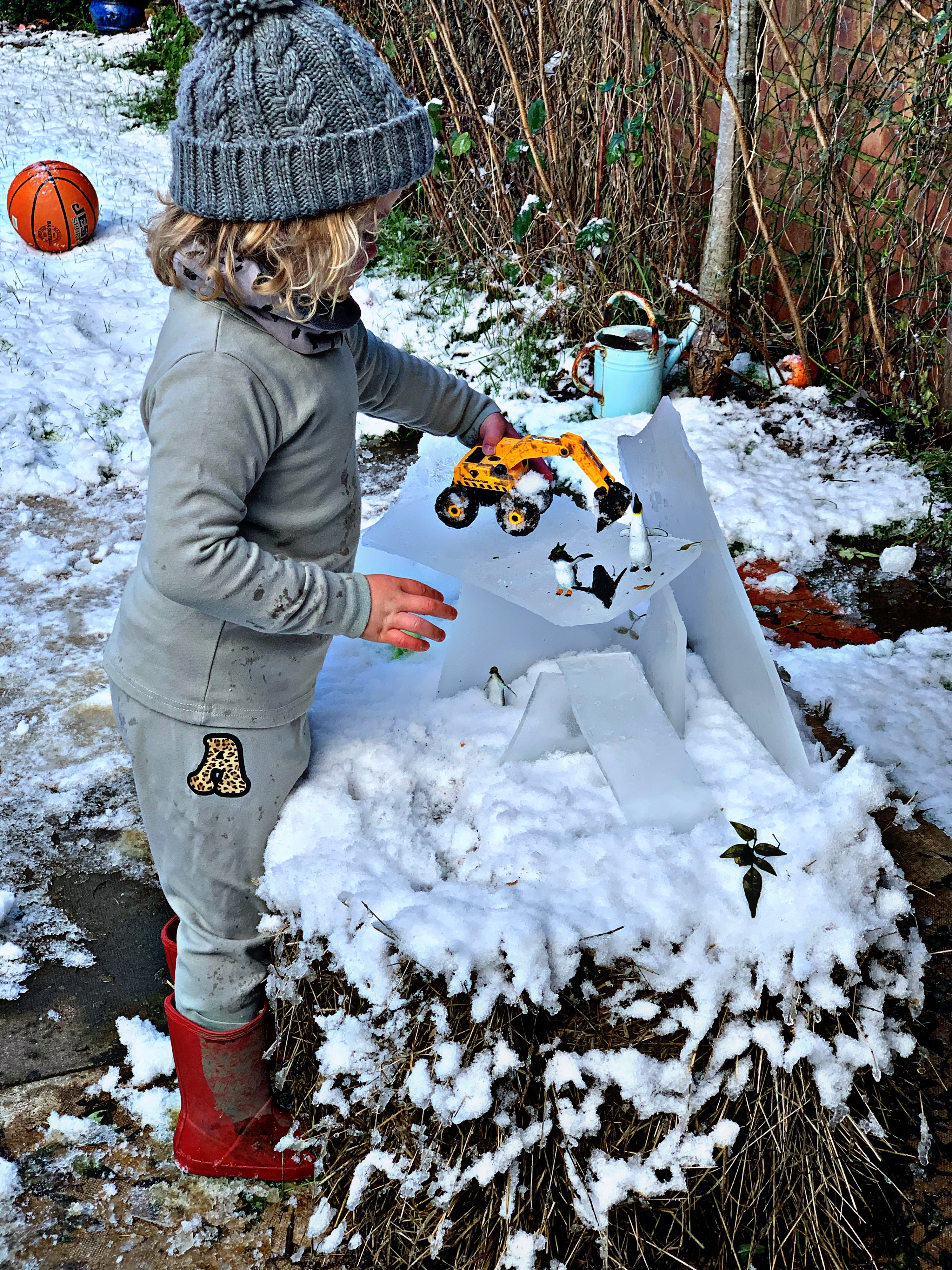
Whenever we use dough, I begin with one colour which is usually scented and one or two tools. Arlo will sit nicely and want to touch it and squish it, make marks with the rolling pin I have provided but his interest would wain within about ten minutes when he was younger. This is normal and a great time to introduce another layer – another colour dough or a new tool. Depending on his moods and interests on that day I might add a toy animal for him to make them stomp through the Dough and leave footprints behind. This example was a snowman building set and I added glitter and peppermint scent to the dough along with a tinker tray.
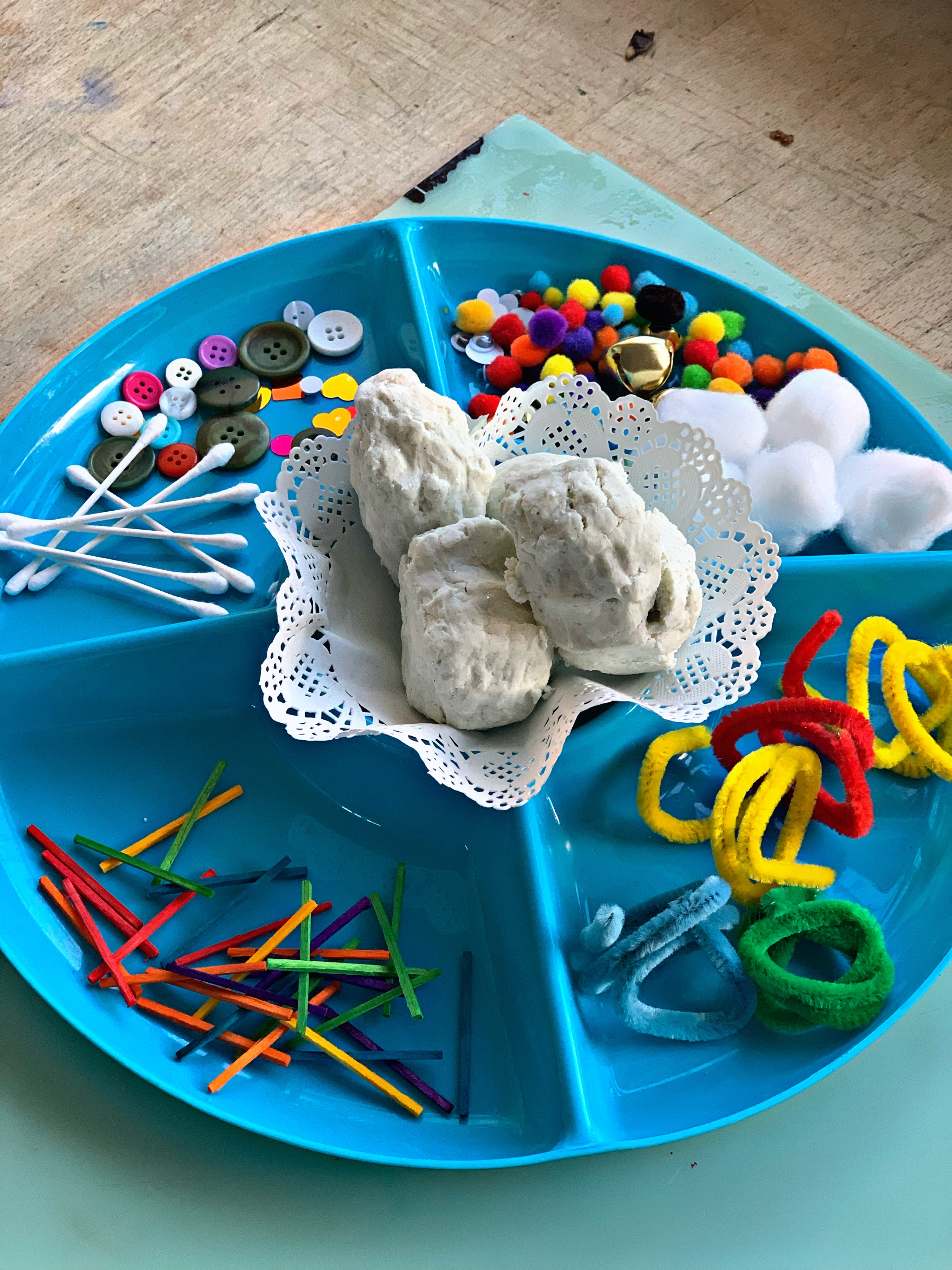
Tinker trays are a selection of bits and bobs which require a lot of extra investigation. It’s a little more of a grown up version of a sensory basket, and I like to save all sorts of bits and bobs to use. I will try to provide resources which fit a theme – little wooden trinkets, beads and buttons, Pipe cleaners etc. These tinker trays are great to explore on their own – you can play by sorting things by shape, size and colour. I also use these a lot with play dough, at almost four he will methodically explore the bits and add features like eyes, wings and legs to shapes to bring them to life.

A small selection of our art materials live in our accessible craft area at all times along with the usual PVA glue, and a big box of our recycled loo rolls and cardboard – so whenever Arlo says he wants to make something totally random like a peacock or a snowflake we can rummage through together and find the bits we need. I tend to rotate this around with the seasons so I’m about to swap in a lot of pastel colours for Spring.
5. Sound
It seems obvious to say “talk to your babies” and in some respects this has backfired on me because Arlo really is a chatter box. When he was tiny and I was at home on maternity leave I would literally narrate my entire day to him and I noticed pretty early on that he recognised my voice and would react to noisy toys with delight. We read books together and so a lot of our inspiration comes from rhythms and rhymes in stories. You can usually hear us before you see us.

Rattles and squeaky toys were fun back in the baby days. Almost every toy makes a noise but it’s fun trying to invent your own too. A saucepan and a wooden spoon can provide hours of entertainment, as can adding rice to a sealed bottle to make a shaker. If you use a transparent bottle then you can add in colours or if you use a shaker with a fabric lid you could use scented rice (layering the senses remember!) – I created a rainbow of sensory bottles for Arlo when he was tiny using coloured rice and feathers in sealed bottles so he could compare the weight and sounds when shaking the bottles. Notice that the bottle contents are also different colours too. Arlo’s favourite toys as a one year old were those which made the biggest bangs.
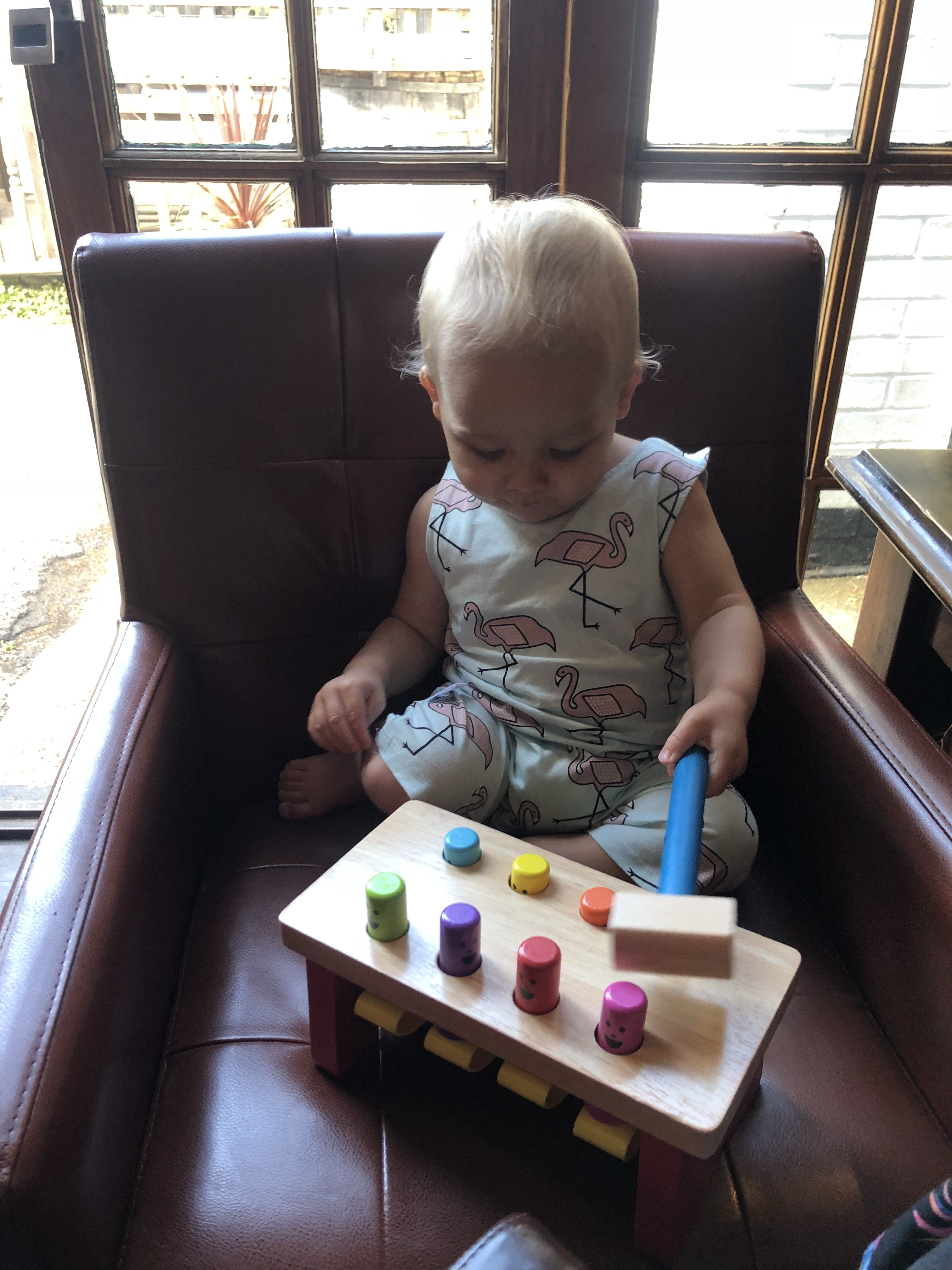
Now he’s older I like to try and interact with Arlo to discuss things as he plays – I will add things like a cardboard tube from a kitchen roll to a tray of rice or chick peas – he will pour the hard pieces down and listen to the rattling, cover each end and shake to make a noise. He loves the raspberry sound a squeezey bottle makes when it’s running out of air, or holding a cup under water to listen to the bubbles pop to the surface and just being as loud as he possibly can be. As he brings his toy animals in to play I will ask “why’s that” or “where’s he going” “what’s he doing”
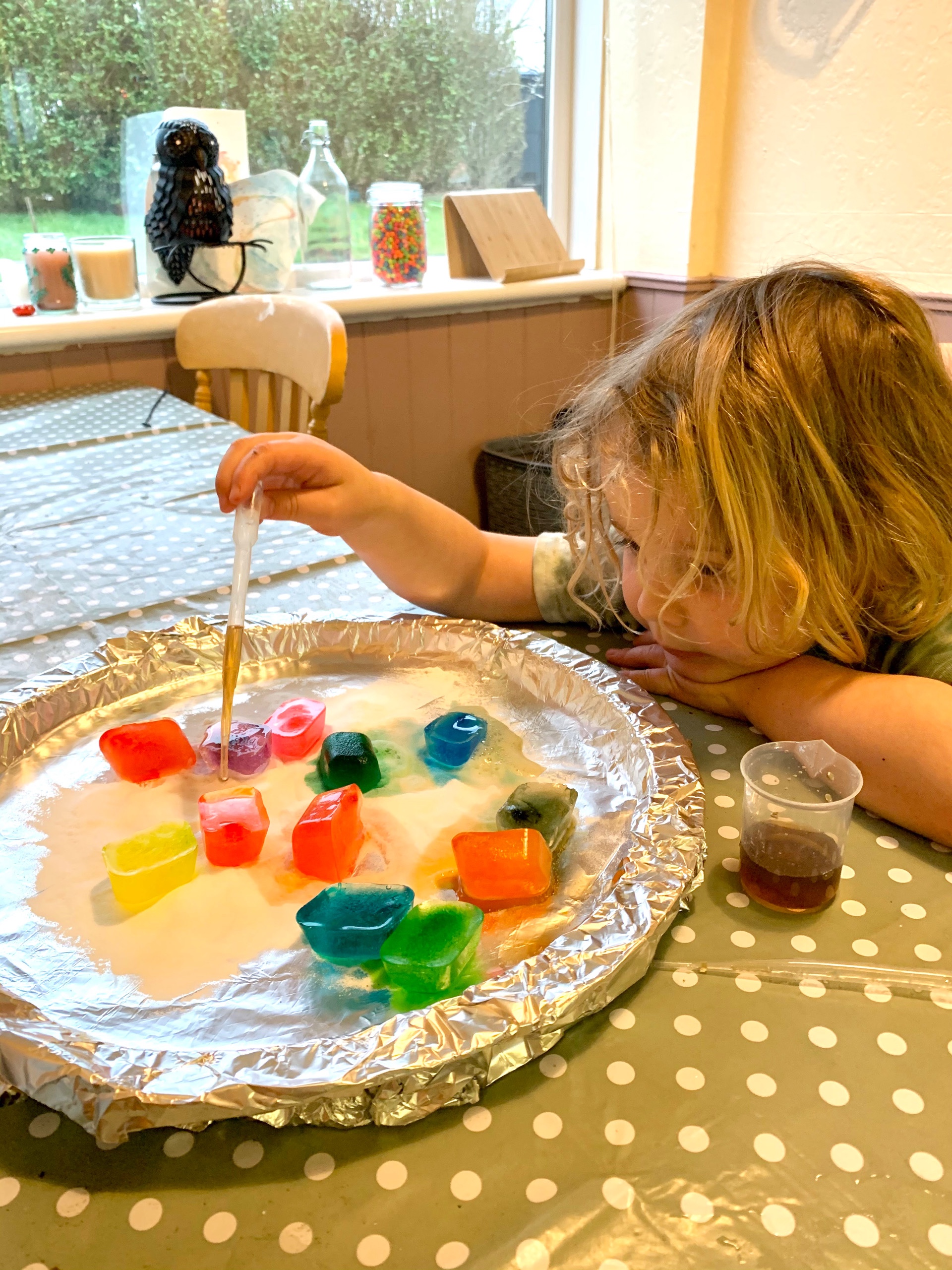
The challenge now is to try and think of ways to incorporate all of the senses in to your play activities, they’re probably already present, but if you think about this before you set something up then you’re going to provide an enriched learning experience.
It’s just as important for adults to talk care if their senses – for advice and information check out Auris Ear Care
